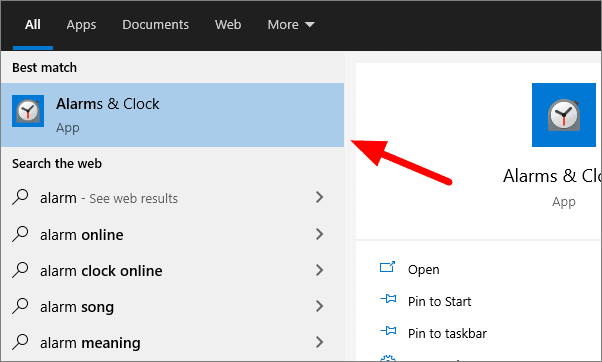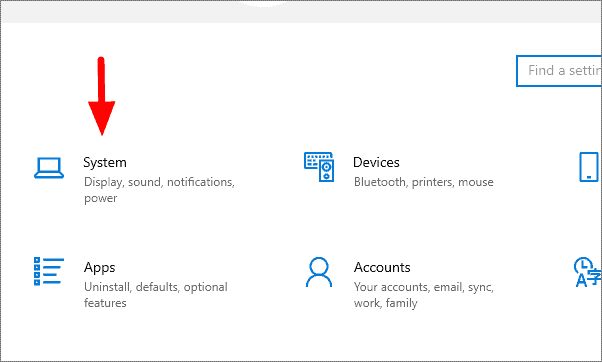In the last century, people used to have conventional alarm clocks but those have become obsolete these days. Nowadays, people use smartphones and their computers to set up an alarm.
Windows 10 offer the feature of setting an alarm along with several additional features like a stopwatch and timer which are just as useful. Alarms serve an important role in the day to day lives by waking us up or reminding us of certain things.
One of the important things to remember before you set up an alarm in Windows 10 is that it will only function when the system is awake and not if the system is in sleep mode or shut down.
Setting up an alarm in Windows 10 is simple. Moreover, it also offers a lot of options to chose from, thus giving us the power to optimize according to our preferences.
Setting an Alarm
Search for ‘Alarms’ in the Windows search box and then select it.

In the ‘Alarm & Clock’ window, you can turn on the default alarm or add a new alarm. To turn on the default alarm, click on the on-off toggle in front of the 7:00 AM alarm. To set a new alarm, click on the plus sign at the bottom of the window.

You can now set up an alarm under the new alarm section. It will also show you how much time there is before the alarm rings.
You can put an alarm name, chose the alarm tone, snooze time, and how many times it repeats. After you are done with the alarm time and other settings, click on the disk icon on the bottom right of the window to save the alarm.

You will be redirected to the ‘Alarms & Clock’ window and the new alarm will be visible here.

After you set an alarm, make sure your system is awake for the alarm to ring. Devices generally go to sleep when there is no activity on the screen for a set period.
Changing Sleep Time to Never
Since alarms won’t go off on Windows 10 unless the system is awake, if you’re setting a mission-critical alarm, be sure to modify your computer’s Sleep/Shutdown settings to always keep it turned on.
To change the Sleep settings on your device, go to Windows Settings and select ‘System’.

In System settings, click on ‘Power & sleep’ and change the sleep time to never when plugged in. You can also change the sleep time to never on battery power, but you could run out of charge, therefore it is to be avoided. When you set up an alarm, keep your system plugged in so that it remains awake at the time of the alarm.


